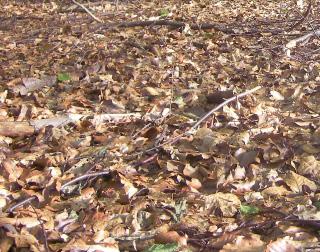
3 minute read
A Beginner’s Guide to Foraging
Foraging can seem a daunting prospect, even for an experienced gardener or home cook. The fear of collecting and eating something potentially poisonous or nibbled by rats is a common deterrent. However, with a keen eye and careful identification, foraging is a sustainable, safe and enjoyable way to dine. While you might grow herbs in window boxes or in your garden, plants you might not have intentionally cultivated can also be transformed into delicious meals.
Dandelions: The likelihood is that if you have a garden, you also have dandelions. The jagged leaves can be picked, washed and dried carefully, and made into a healthy salad. Drizzle the dandelions with a simple dressing of olive oil, lemon juice and salt and pepper, and they are ready to be eaten. You can also mix the dandelions with other leaves, such as shredded cos or romaine or fresh spinach leaves. For a more richly textured salad, add chopped and toasted almonds, pine nuts or sunflower seeds. Dandelion leaves have a slightly tangy taste, similar to rocket, but without the peppery fragrance.
Advertisement
Elderflower: Elderflower is easily identifiable by its creamy white colour and sweet, heady scent. Be careful not to confuse it with cowbane, which is poisonous, and has small white flowers which grow in a radial pattern. Cowbane grows from the ground, while elderflower is found in hedgerows. Elderflower can be made into cordial very easily. Make sure you wash your elderflower carefully, and remove any stray insects. Combine 200g of caster sugar with half a litre of water in a saucepan and bring to the boil, adding the zest and juice of a lemon. Remove from the heat, and add in seven or eight heads of elderflower. Allow the mixture to infuse overnight, and then strain through muslin. Store the cordial in a sterilized bottle, and add it to fizzy water, gin and tonic, or a cocktail of your choosing.




Samphire: Found by the sea, samphire is a juicy marine vegetable with a texture similar to a succulent cactus. It can be steamed, and served with butter and lemon juice as an accompaniment to fish. It has a gritty string in the centre of each frond, and therefore the flesh is usually bitten off, and the centre filtered through the teeth and discarded. Ensure you clean it well before steaming to remove any sand or grit.
Sorrel: While sorrel is grown as a domestic herb, it also grows wild. It has elongated, large green leaves. Any fans of Greek food will know its flavour from spanakopita, where it is combined with spinach and chard and encased in pastry. Sorrel has a unique, sharp taste which makes it an excellent accompaniment to fish, when cooked into a sauce (e.g. added to melted butter and garlic). Sorrel is also delicious in soup, where it can be wilted alongside nettles for an iron-rich meal.


Wild Garlic: Wild garlic is an excellent plant to cook with. Fragrant, vibrant, and with more of a kick than regular garlic, this plant can be found in deciduous woodlands throughout Britain and Ireland. The leaves can be added to a salad, or used to make pesto in the place of basil. Simply blend a handful of leaves with two tablespoon of parmesan, a handful of toasted walnuts, a glug of olive oil, a squirt of lemon juice, and season to taste. Delicious served with pasta, or just on a piece of toast.
Blackberries: As Seamus Heaney’s poem tells us, “In late August, given heavy rain and sun/ for a full week the blackberries would ripen.” Found in hedgerows, blackberries can be eaten by themselves, cooked into jam, or baked into muffins or a blackberry crumble.


Remember to always err on the side of caution when foraging. There are plenty of books and online resources on foraging and accurately identifying edible plants but, when in doubt, leave it out!
WORDS BY GRACE GAGEBY












